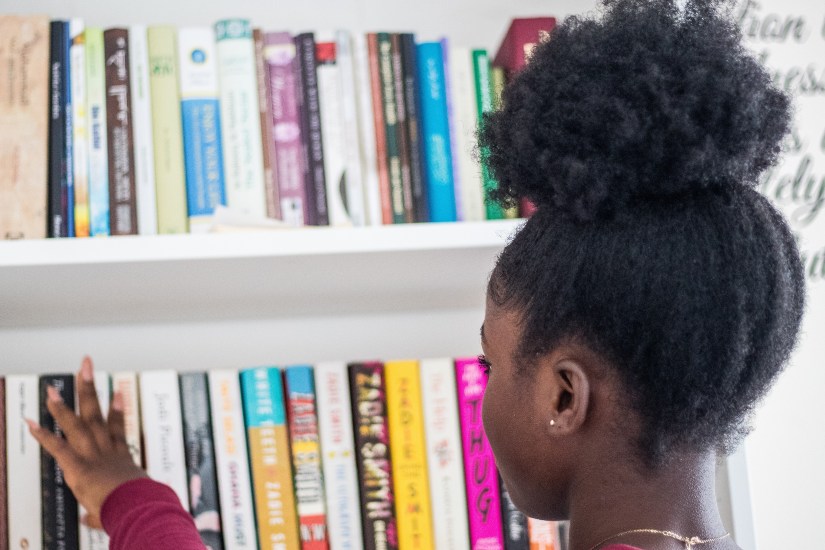From Españolé we have selected some of the best books to learn Spanish.
This list includes both grammar and vocabulary guides, as well as readings from different genres and adapted to different proficiency levels. In addition to specific books to prepare for official Spanish exams, such as the DELE, the SIELE or the admission exams required for Spanish universities.
Which books to read while learning Spanish as a foreign language?
Spanish spelling rules and grammar can be complicated, but by reading and watching other cultural products, such as movies and series in Spanish, it becomes easier to assimilate.
Although teachers and schools that teach Spanish in Spain are always looking for more interactive materials, books continue to be a fundamental tool to conduct our classes, do exercises or recommend readings to reinforce knowledge and expand vocabulary.
Many Españolé students ask us which are the best books to learn Spanish as a second language.
Our answer is usually the same: depending on your level, your preferences, and your learning objectives, we can give you recommendations, although we always follow some general criteria.
For example, all books to learn Spanish should be adapted to the age of the student (especially in the case of children and teenagers) and to their level of Spanish.
Ideally, the textbooks should have a theoretical and a practical part, and include scenarios similar to the ones the student might experience in the real world.
If you are looking for a good book to learn Spanish, it is also important for it to be entertaining, to include illustrations that will help you understand what is being explained in the text and to add additional material, such as an activity book or a mobile App, to reinforce the theory or practice pronunciation.
Choosing books written by Spanish authors can also help you learn Spanish fast and familiarize yourself with the Spanish culture by reading their books.
Want to speak Spanish fluently? Study at a Spanish school in Spain!

Books to learn Spanish + Spanish writers
In addition to the “Manual de la Nueva Gramática de la Lengua Española” and the “Ortografía de la Lengua Española”, published by the Real Academia de la Lengua Española and that we should always take as a reference to solve any doubts, we have prepared a list with some of the best books to learn Spanish.
Do you know any of them?
- Madrigal’s Magic Key to Spanish. Originally published in 1953, this book by Margarita Madrigal has helped many students learn Spanish over the years. As a curiosity point, we have to mention that the artist Andy Warhol created the illustrations!
- Easy Spanish Step-By-Step. The difference between this book and other manuals is that it makes grammar simpler, presenting it as “building blocks” that helps the student to learn grammar, verbs, and vocabulary. It is especially recommended for very methodical and organized students.
- Easy Spanish Phrase Book. With this book, Dr. Pablo García Loaeza proposes to learn Spanish with phrases. Although it is not a grammar manual as such, “Easy Spanish Phrase Book” is useful because of its “travel” format and because it works as a pronunciation guide that will help you avoid the most common mistakes foreigners make when communicating in Spanish.
- Spanish Frequency Dictionary. The four volumes of the “Spanish Frequency Dictionary” are designed for bilingual or native English speakers. The books are available at Essential, Intermediate, Advanced and Master levels, include practical everyday vocabulary and pay special attention to the explanation of phonetics – pronouncing the hardest words in Spanish will be much easier!
- 501 Spanish Verbs. We end this first selection of books for learning Spanish with a book with a high level of acceptance among teachers and students for its simplicity and usefulness. Basically, this book teaches how to use the most common Spanish verbs with easy-to-follow tables.
Discover the Spanish alphabet and its pronunciation.
Books to learn Spanish A1
These are some of our recommended books for people who are just starting to learn Spanish:
- Practice Makes Perfect: Basic Spanish. This collection of books by Dorothy Richmond has helped many students to get started in studying Spanish. Composed by five volumes, interactive and organized, they have short and simple lessons so that beginner students don’t get stuck with grammar and can learn at their own pace.
- Vocabulary A1 Spanish. This book is one of the basics you should put on your list if you are going to start studying Spanish. It is split by themes and includes specific vocabulary, verbs and common expressions. Very educational and useful to reinforce the knowledge learned in your first Spanish classes.
- Nuevo Sueña (Spanish as a Foreign Language). This method from Editorial Anaya will allow you to get started in the Spanish language and continue studying until you get an official degree. It includes textbooks, vocabulary, writing, and phonetics from levels A1 to B2.
- Short Stories in Spanish for Beginners. This reading book contains 8 stories from different literary genres. Each has the 1000 most frequently used Spanish words and dialogues to help put them in context. In addition, each story is accompanied by a summary of the plot to contextualize it and a glossary of terms, like a dictionary.
Discover the easiest way to learn Spanish in Spain!
Reading books to learn Spanish for foreigners
Now that we have listed some of the best books for beginners, we recommend you some of the best reading books to learn Spanish.
These are works signed by well-known authors and which are also authentic classics of the Spanish literature.
We have added a small note about their “level” in each of them, how do you like them?
- Leyendas, de Gustavo Adolfo Bécquer (low difficulty level). Gustavo Adolfo Bécquer is one of the best known authors of Spanish Romanticism. Because of its theme and vocabulary, this reading book includes a wide variety of verb tenses and is recommended for any student who wants to become familiar with classic Spanish literature.
- Lorca. La valiente alegría, by Aroa Moreno (low difficulty level). This book tells the life story of the Spanish poet Federico García Lorca, who was shot during the Spanish Civil War. Written in easy to read language, it introduces Spanish language learners to genres such as poetry and theater.
- Manolito Gafotas, by Elvira Lindo (medium difficulty level). This novel was a great success in Spain, especially among young readers, and is now considered a good choice for learning Spanish if you are at an intermediate level. Its plot is simple (it tells the adventures of a boy who lives in a working class neighborhood in Madrid) and will allow you to learn a more everyday, conversational language in a fun way.
- El camino, by Miguel Delibes (medium-high difficulty level). El Camino is a great classic of the Spanish literature. Set in the second half of the 20th century, it tells the story of a boy in post-war Spain. Its narrative is delicate (a true masterpiece!) and the descriptions of characters and places are the true protagonists.
- La sombra del viento, by Carlos Ruiz-Zafón (high difficulty level). Students with a B2 level of Spanish can consider reading this bestseller that describes a gothic Barcelona and presents a plot full of mysteries and secrets that engage the reader, a real treat for students who love intriguing books!

Books to prepare for the DELE exam
If your short-term goal is to pass this exam, we recommend using several textbooks, depending on your level and whether you already received specific preparation classes for the DELE exam.
The DELE Pack from EDELSA is a good alternative: it has several books organized by levels to work on all the areas necessary to successfully pass this exam.
Other books you can check out are:
- Las claves del nuevo DELE (Editorial Difusión)
- El Cronómetro (Editorial Edinumen)
- Prepare and Practice the DELE (Editorial Octaedro)
SIELE exam preparation books
If your intention is to take an intensive Spanish course in Spain to prepare for the SIELE exam, and you are looking for complementary material to support our classes, our recommendation is the manual by Ramón Díez Galán.
It is the most complete book to prepare for the SIELE exam: it contains exercises from level A1 to C1, sample exams, grammar, and recommendations.
At Españolé we encourage our students to complete their Spanish classes with a wide range of readings. Do you have any other suggestions? Share them with us!
